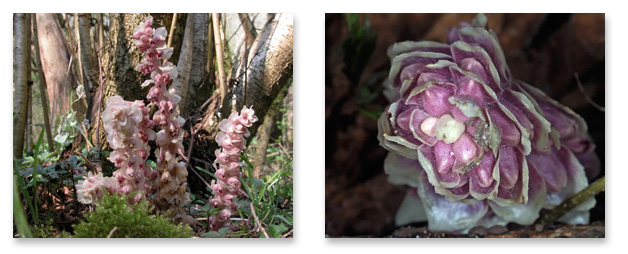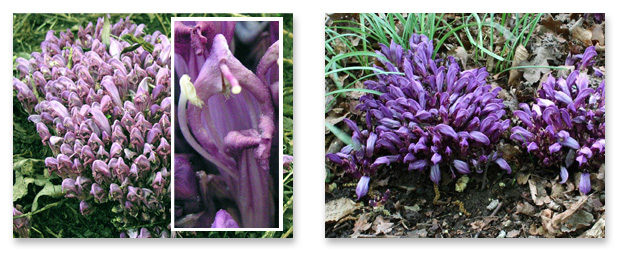Every month we will post a little blog containing a brief description accompanied by a little bit of ecology, on a specific wildflower! It is our pledge to promote all varieties of wildflowers!
So which flower will it be this month? Introducing a very unusual little wildflower called Toothwort (Lathraea) which has a small genus of about 10 species which are perennial herbs native to temperate Europe and Asia. The name Lathraea means hidden. This is due to the fact that part of the plant lives below ground for most of the year, out of sight until the spring when it pushes up its white flowering spike through the leaf litter. The name Toothwort refers to the plant’s toothed, or scaly, rootstock.

It is commonly considered to be a member of the figwort family (Scrophulariaceae) but it is now grouped with the broomrape family (Orobanchaceae).
The plant bears small white or pale pink inflorescence spikes which occur in spring, which produce pinkish – to yellowish – white flowers situated on one side of the stem. It tends to favour damp habitats so it is not unusual to find it on the bank of a stream.
Ecology: Toothwort has no chlorophyll, (the green pigment that allows plants to obtain energy from light) so its survival is totally dependant upon other species. Common Toothwort pictured above (Lathraea squamaria), attaches itself onto the roots of Hazel and Elm trees and takes everything it needs from its host giving nothing in return, making it parasitic in nature. It is a woodland plant normally associated with calcareous or nutrient rich soils.
One species of Toothwort, Lathraea clandestina which is native to Belgium, France, Spain and Italy, has over the years become naturalised in a number of countries, including Britain and New Zealand. Documentation points to it being first reported in the wild in England in 1908 at Coe Fen (Cambridgeshire), where it still survives today. Although it has spread it isn’t considered to be prolific. This particular species is parasitic on the roots of Alder, Poplar and Willow, unlike its common variety.
This little plant is becoming increasingly popular as a decorative plant.
